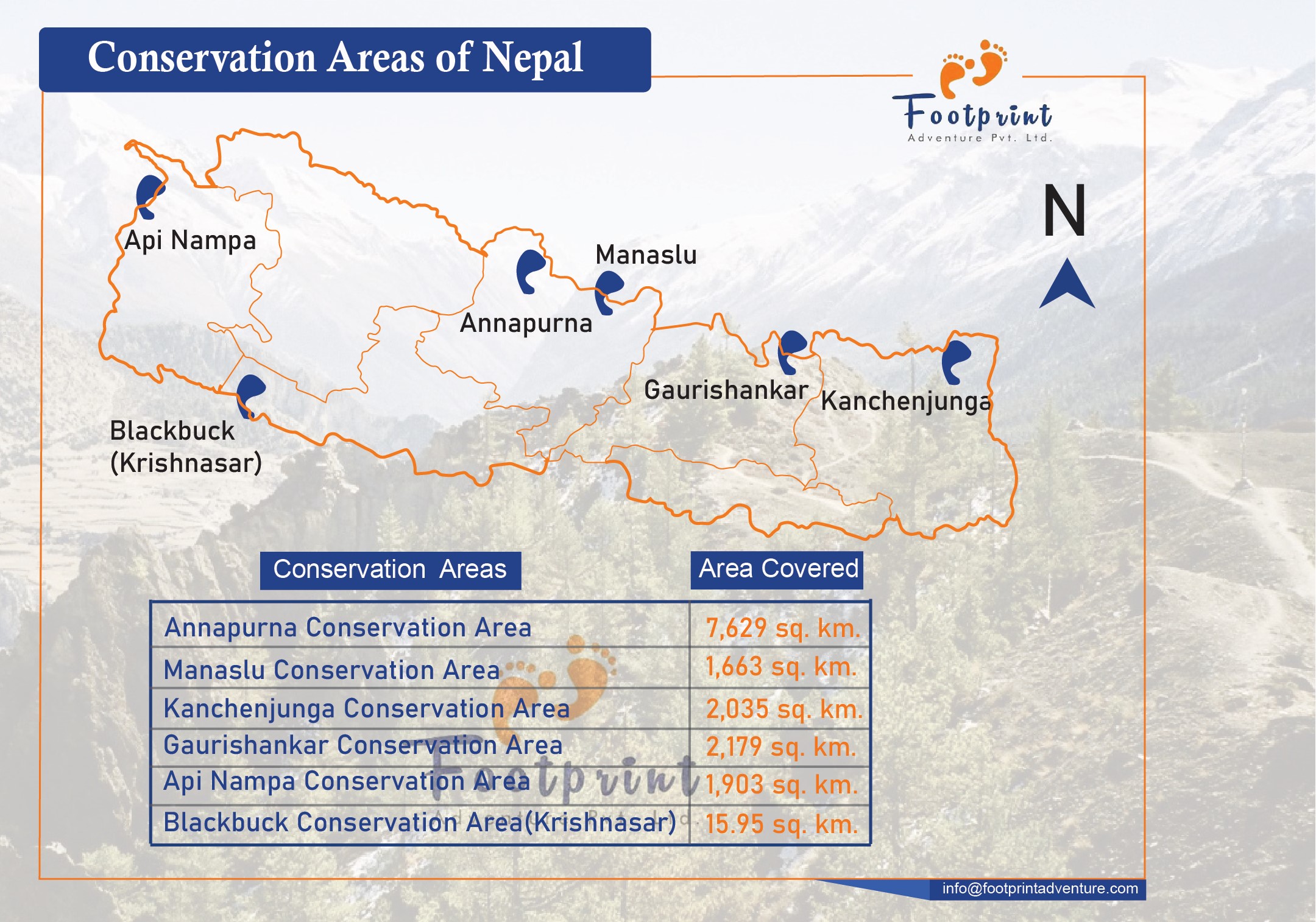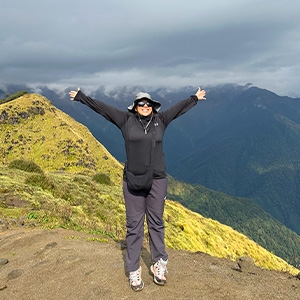List of conservation areas of Nepal
Annapurna Conservation Area
The Annapurna Conservation Area, named after the 8th highest mountain in the world, Mt. Annapurna (8091m), was established in 1985 A.D, encompassing land in the districts of Lamjung, Kaski, Myagdi, Manang, and Mustang. The area of Annapurna Conservation Area is 7,629 sq. km. making it the Largest Conservation Area of Nepal. This region has significant altitudinal variation, which has contributed significantly to a wide range of climatic conditions.
In addition, the habitat is composed of trans-mountain and Himalayan ecosystems, which support a variety of flora and fauna species, such as the deepest gorge in the world, the Kali Gandaki. Additionally, it is the region of Nepal with both the highest and lowest rainfall. Pheasants, snow leopards, and musk deer all thrive in the Annapurnas.
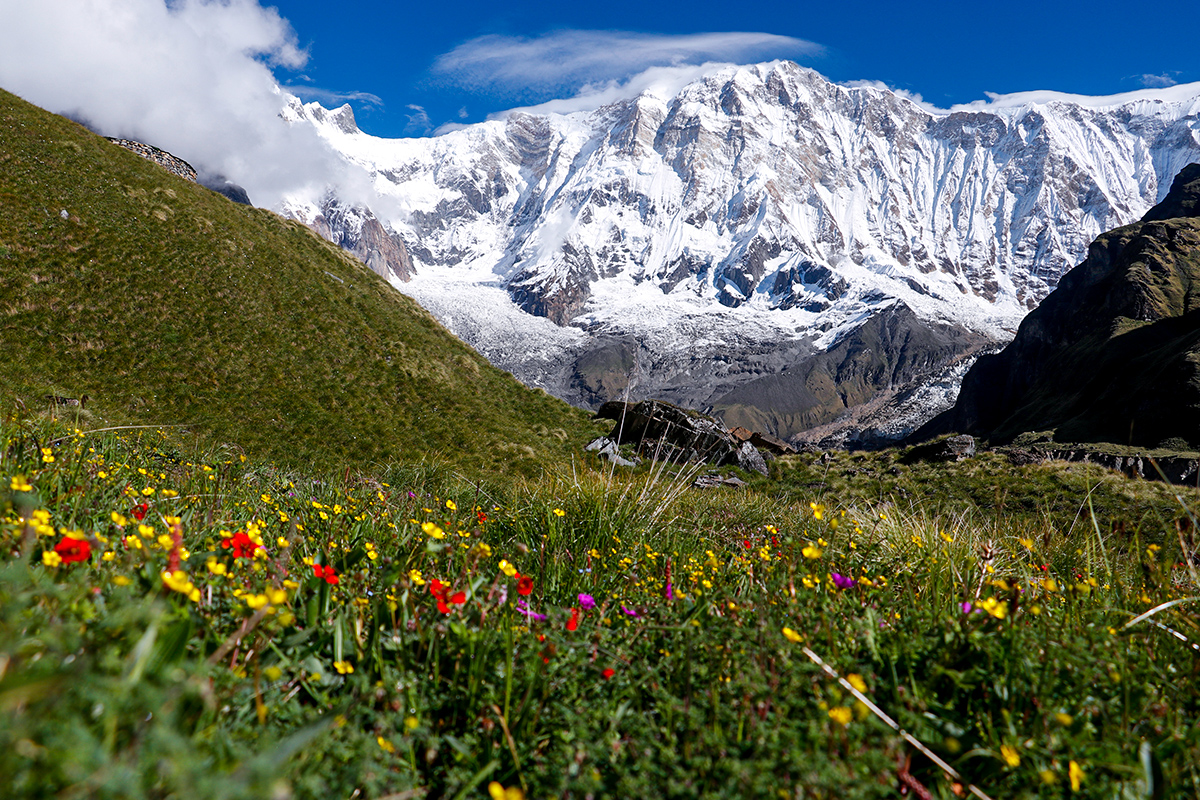
Furthermore, according to records, it has close to 500 species of birds, and 100 species of animals, as well as several fish species, vascular plants, and indigenous flowering plants. All of the mentioned characteristics have helped Annapurna Conservation Area have the best, most daring, and most fantastic hiking routes and destinations. Majestic and beautiful mountain vistas can be seen from some of the Annapurna circuit routes. Besides, this Conservation Area of Nepal is well-known for its several holy sites, including Muktinath, numerous Buddhist and Hindu pilgrimage sites, and old monasteries.
- Area: 7,629 sq. km.
- Population: 100,000
- Lowest elevation: 790 m (2,590 ft)
- Highest elevation: Annapurna I at 8,091 m (26,545 ft)
- Districts Covered: Manang, Mustang, Kaski, Myagdi, and Lamjung.
- Famous For: Annapurna Sanctuary
- The Number of Flowering Plants in ACCA: 1226 species of flowering plants
- Animals: 105 mammals, including the Tibetan argali, snow leopard, musk deer, and wolf.
- Birds: 518 birds, including Chukar Partridge, Pink-browed Rosefinch, Brown Fish Owl, Demoiselle Crane, and Black-faced Laughingthrush
- Reptiles: 40 types
- Amphibians: 23 types
Manaslu Conservation Area
The Manaslu conservation area was formed in 1998 and spans a significant portion of the Gorkha region. This Conservation Area of Nepal is known for its well-known trekking and travel routes. This region is home to over a thousand different species of flowering plants, over one hundred different bird species, butterflies, animals, reptiles, etc. The prominent species in this region include frogs such as Amolops Formosus, Ombrana Sikkimensis, Nanorana Liebigii, and Duttaphrynus Himalayans, as well as mammals such as musk deer, snow leopards, blue sheep, and Himalayan tahr. The presence of watercourses, glaciers, mountains, and a diversity of ecosystems in this region have contributed to making this area popular as the best travel destination. Here, we can see majestic views of mountains such as Manasalu and numerous others, enjoy nature, and explore the community culture that is prevalent in the area.
- Area: 1,663 sq. km.
- Lowest Elevation: 1,400 m
- Highest Elevation: 8,156 meters at the Manaslu Peak.
- District: Gorkha
- Mammals: 33 species including the Snow leopard, Lynx, Musk deer, Red fox, Jackal, and Brown bear, as well as the species that serve as food for these predators, such as the Blue sheep, Himalayan Tahr, Himalayan Serow, Wooly hare, and Himalayan marmot.
- Birds: 110 species
- Butterflies: 11 species including the Snow partridge, Tibetan snowcock, Chukar partridge, Himalayan griffon, and Golden eagle.
- Reptiles: 3 species
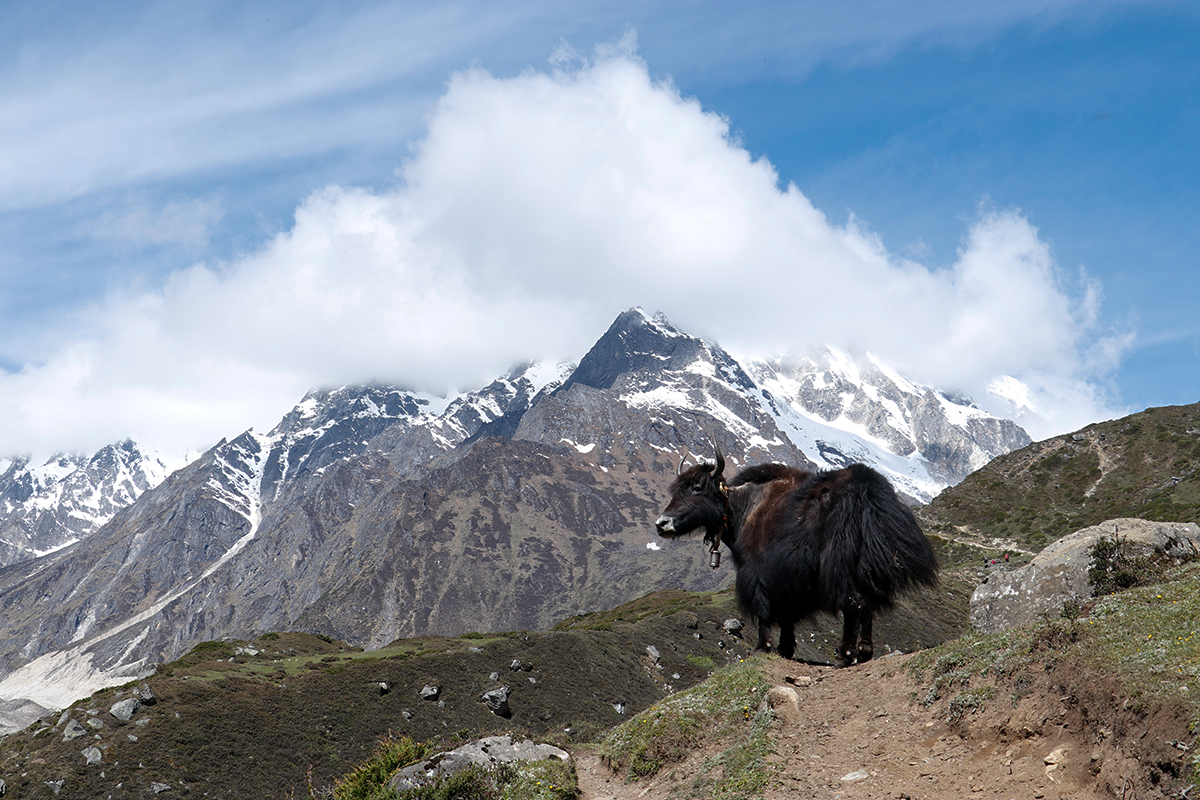
Kanchenjunga Conservation Area
The Kanchenjunga Conservation Area was established in March 1997 which covers a portion of the Taplejung district. It is a portion of the revered Himalayan mountain range. On its eastern side, Khangchendzonga National Park in Sikkim, India, and Qomolangma National Nature Reserve in Tibet, China, is likewise connected to Kanchenjunga. The area of this Conservation Area of Nepal is mostly populated by mammal species including Musk deer, Asian black bears, Snow Leopards, Red Pandas, and bird species like blood pheasant, snow cock, golden-breasted Fulvetta, and red-billed chough, according to records of a wide variety of floral and faunal species. Lilies, orchids, rhododendrons, and many other beautiful plants bloom throughout the spring, giving tourists a breathtaking spectacle.
Tropical hardwoods can be found in the lower zone, while pine and oaks can be found in the higher section. The biggest glaciers in the world are also found there. The Kanchenjunga Conservation Area Management Council was founded in April 2003 with the help of WWF and the Nepali government entrusted it with management of the area in August 2006. Also, as part of the WWF's Living Planet 2020 campaign, the Nepalese government designated this area as a gift to the Earth. It has beautiful lakes, woodlands, farmland, meadows, spectacular water sources, and glaciers in the higher regions. Because it offers the best pan-Himalayan perspective, in addition to glaciers, water resources, and many other above-mentioned natural resources, the Kanchenjunga area is one of the top locations for adventure seekers.
- Area: 2035.00 Sq. Km
- Lowest elevation: 1200 m (3,937 ft)
- Highest elevation: 8,586 m (28,169 ft)
- Flowering Plants: Roughly 2,000 species of flowering plants make up 1.8% of Nepal's total floral diversity.
- Birds: 252 species.
- Animals: 22 species
- Insects: 82 species
- Fishes: 5 species of fish
- Amphibians: 6 species
Gaurishankar Conservation Area
The Gaurishankar Conservation Area was created in January 2010 and allocated by the government of Nepal to the National Trust for Conservation (NTNC) for maintenance for a period of 20 years. It covers various portions of Ramechhap, Dolakha, and Sindhupalchok. Tibet has a border with it in the north. The Sacred Himalayan range contains it. Additionally, this Conservation Area of Nepal links Langtang National Park to Sagarmatha. Gaurishankar Himal is located here, along with a variety of landforms and habitats. There are several plant and animal species, including bird species, snake species, amphibian species, and fish species, in this area. Plant species including Pinus Wallichiana, Pinus Roxburghii, Querous Lanata, Pinus Patula, Alnus, and Temperate Oak woodland predominate in this region. This conservation area, which serves as the primary habitat for the critically endangered Red Panda, was where records of Assam macaques, Himalayan gorals, Indian muntjacs, masked palm civets, and golden cats were made in 2019. The majestic Himalayan range, as well as the many different cultures here, have all helped to make this region one of the most paradisiacal for travelers and adventure seekers.
- Area: 2,179 sq. km.
- Lowest Elevation: 968 m.
- Highest Elevation: 7181 m
- Districts: Sindhupalchok, Dolakha, and Ramechhap
- Vegetation types: 16 major vegetation types in this region include the Pinus Roxburghii forest, the Schima-Castanopsis forest, the Alnus forest, the Rhododendron forest, the Pinus Wallichiana forest, the Pinus Patula forest, the Lower temperate oak forest, the Temperate mountain oak forest, the East Himalayan oak forest, the Juniper forest, the Shrubland, and the Moist alpine scrubs.
- Plant Species: A total of 565 species of plants
- Animals: 35 species of mammals
- Fishes: 16 species
- Amphibians: 9 species
- Reptiles: 22 species
- Birds: 235 species
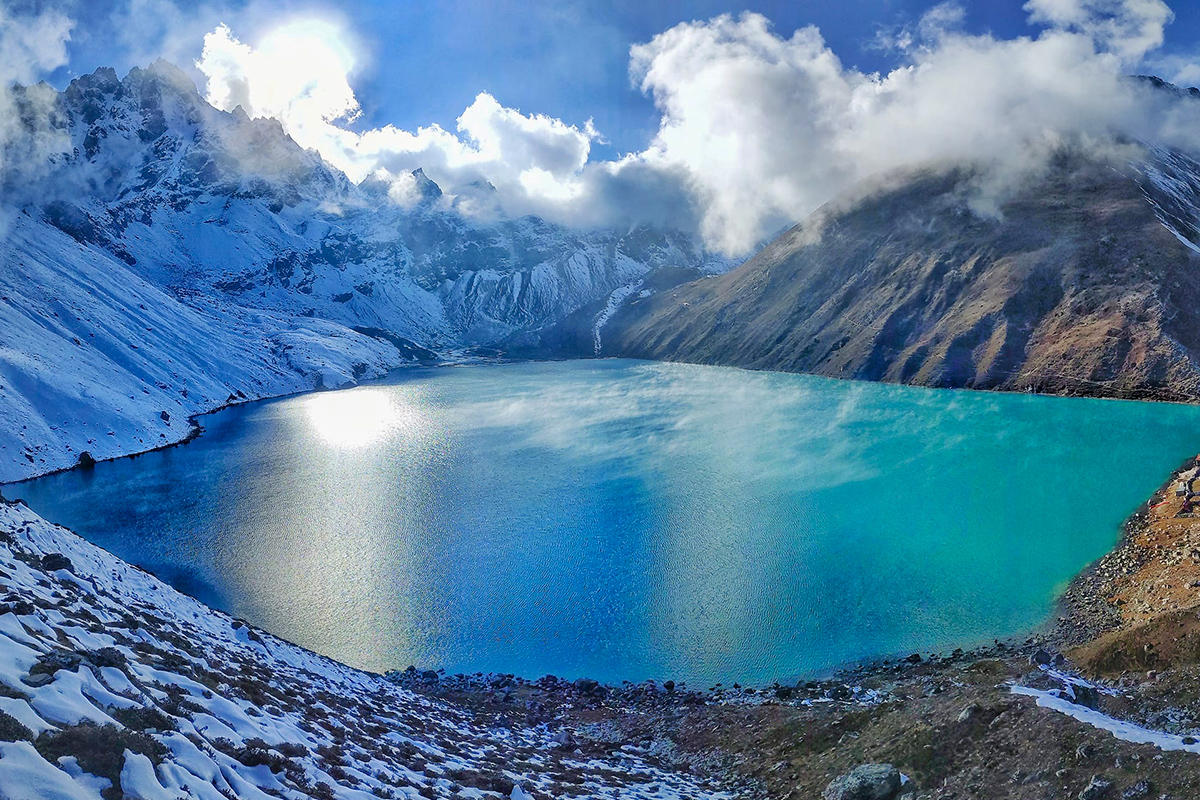
Api Nampa Conservation Area (Latest Conservation Area of Nepal)
The Api Nampa Conservation Area, the New Conservation Area of Nepal was created on July 12, 2010, and is named for two well-known peaks in the Darchula district: Api (7,132 m) and Nampa (6,757 m). Extreme altitudinal variation in this area has influenced both species and climate variance. The climate in this conservation area is characterized by high humidity and rain. Due to its alpine climate, the northern half is always completely covered in snow.
Perhaps the mid-hills have a temperate climate, while the southern section and valley side are subtropical. According to records, there are numerous species of plants, mammals, and birds in this area. In particular, this area is home to plant species like Yarsagumpa, Talis Patra, Kutki, Sugandhwal, Jatamansi, Panchaule, and many others, birds like Danphe (Impeyan pheasant), Monal, Yellow-billed chough, Red-billed chough, Snow cock, Blood pheasant, and many others. Due to the above characteristics, which include a wide variety of plant and animal species, mountains, and a vast range of cultural practices, this area has become one of the top travel destinations and has experienced a boom in tourism.
- Headquarters: Khalanga, Darchula in the Far Western Development Region
- Neighboring Districts: Sindhupalchok, Dolakha, and Ramechhap
- Area: 1903 sq km
- Lowest elevation: 539 m (1, 768 ft)
- Highest elevation: 7132 m (23398 ft)
- Vegetation: 69 species of Pteridophytes, 12 species of gymnosperms, and 535 species of angiosperms in the plant kingdom.
- Mammals: 43 different species of mammals exist, including the red panda, snow leopard, Himalayan black bear, Himalayan tahr, Himalayan musk deer, goral, and serow.
- Birds: 263 bird species, including the Himalayan Monal, the Snowcock, and the Blood pheasant,
- Fishes: 69 species
- Butterflies: 30 species
Blackbuck Conservation Area (Krishnasar Conservation Area)
Blackbuck Conservation Area is the Smallest Conservation Area in Nepal with a total area of 15.95 sq. km. This one was created in 2009 and is situated in the Bardiya district, close to Bardia National Park, in the town of Bardia. It is named after the critically endangered "Black Buck" species and this conservation area was specially established with the motive of conservation and protection of Blackbuck in Nepal.
Although the blackbuck in Nepal was on the verge of extinction in 1975, a tiny herd of nine blackbuck was discovered in Bardia. Since that time, Black Buck has been given special protection, and in 2009, the Nepali government created a reservation area in its honor. There are now more than 293 black bucks in Nepal. Blackbuck is a tiny herd that was discovered in Bardia for the first time in 1975 A.D. After discovering the value of the blackbuck species as well as the surrounding natural resources, the Blackbuck Conservation Area was created. There are 281 blackbuck species known, including 64 bird species, 14 mammals, and 12 reptiles. This conservation area has been enhanced with lovely woodland regions, water resources, and distinctive cultural heritage monuments, which has made it one of the most intriguing and lovely places to visit. It is also well-known for its cinematography and photography.
- Area: 15.95 Sq. Km
- Elevation: 152 meters
- District: Bardia
- Flowering plants: Rhododendron, Larix Himalaica, Schima Wallichii, Castanopsis Indica, Picea Smithiana
- Animal protected: Endangered Blackbuck (Krishnasar)
- Birds: 110 species
There is a world of difference between national parks and conservation areas, despite the fact that both seek to protect ecological diversity and advance tourism. In the same way that a national park protects the entire ecosystem by preserving a vast geographical region along with its plant and animal life, a conservation area dedicated to the protection of a particular species might be established. In a similar vein, a conservation area is more concerned about the long-term sustainable development of the area it protects and therefore takes a more relaxed approach to the presence of people in the zone. The regulations in a national park are stricter, and obtaining permission to make certain alterations inside the park's jurisdiction requires special authorization. This is one of the ways in which a conservation area is distinct from a national park.
